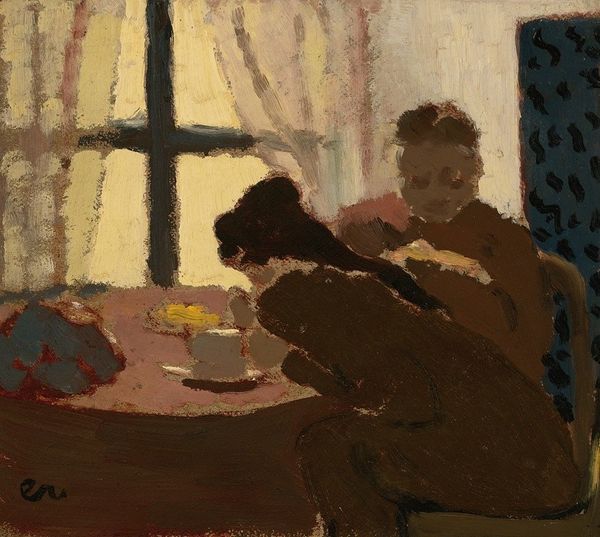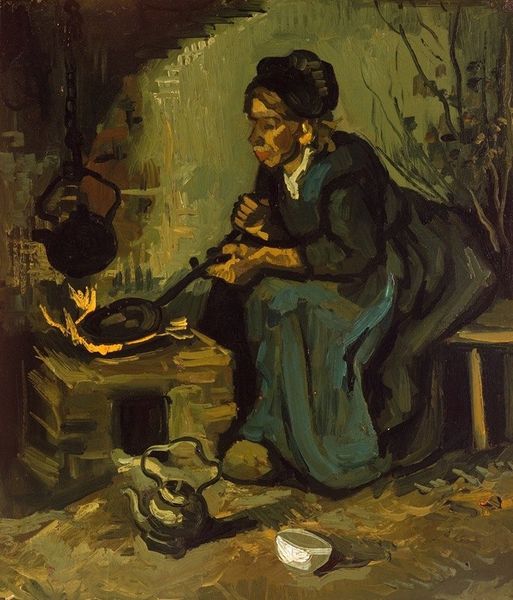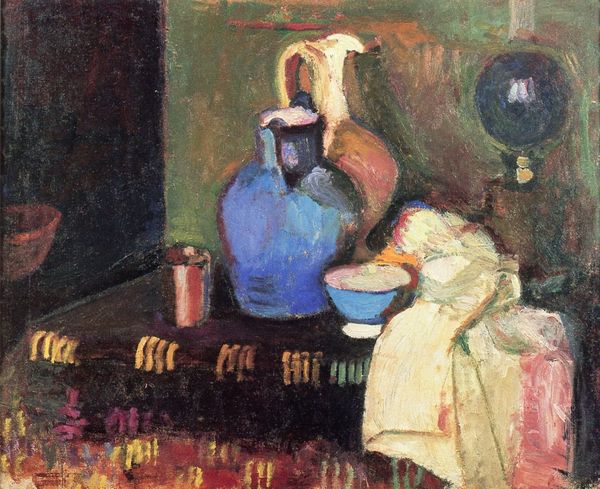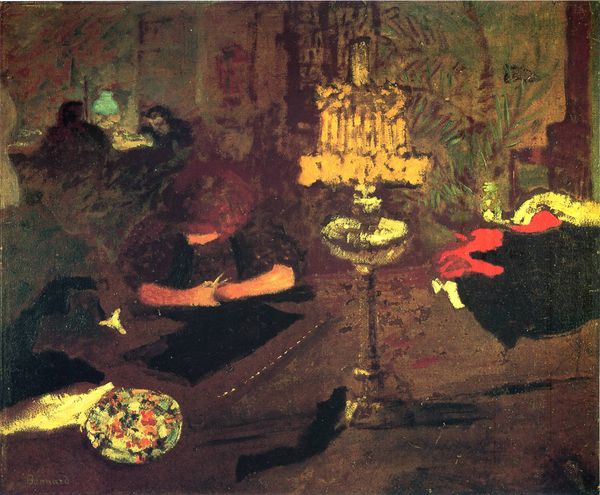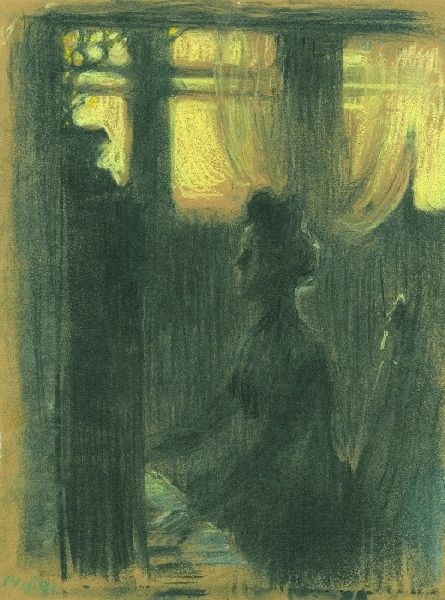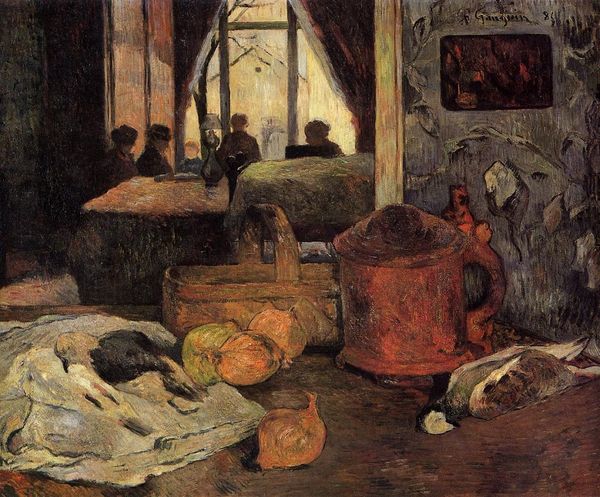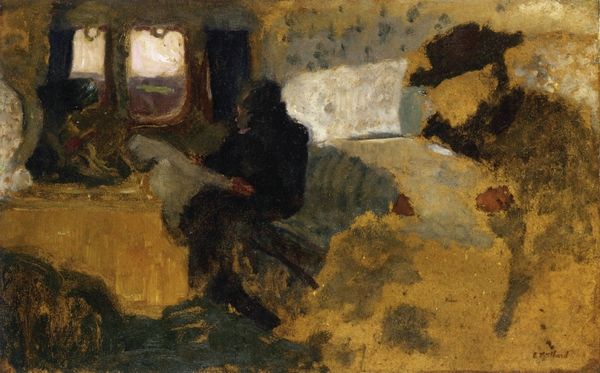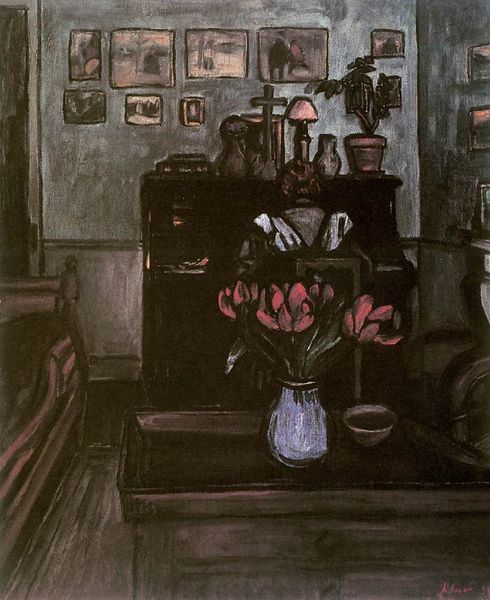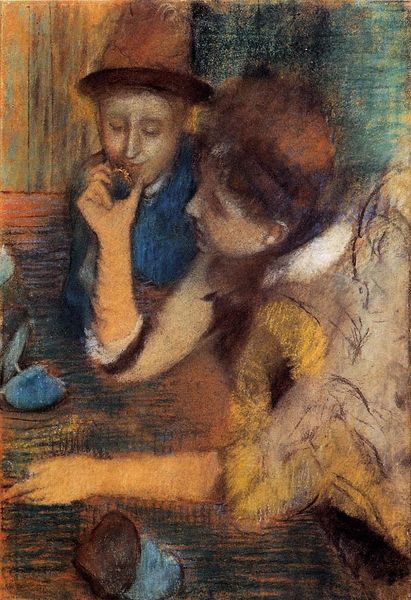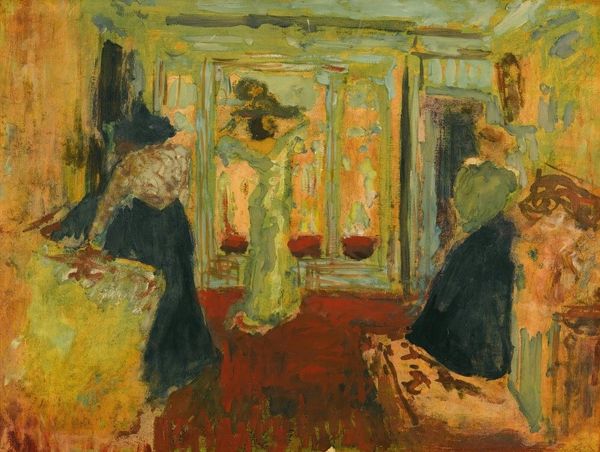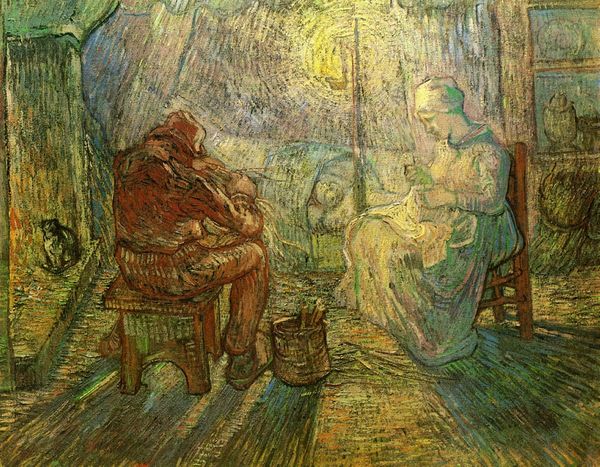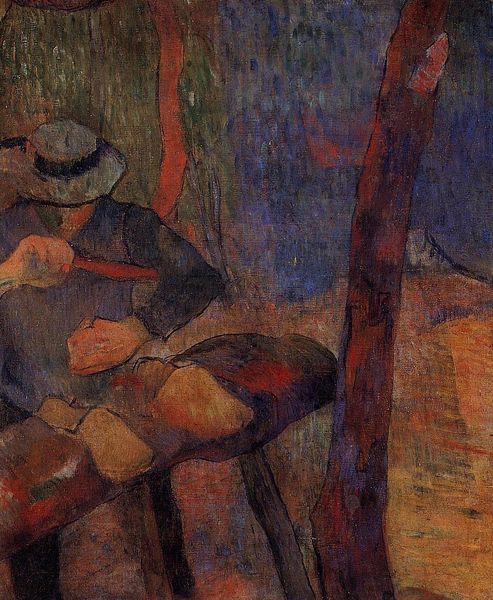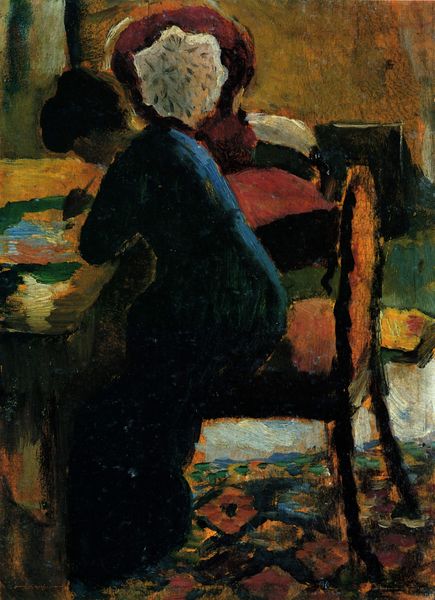
painting, oil-paint, impasto
#
portrait
#
painting
#
oil-paint
#
landscape
#
oil painting
#
impasto
#
genre-painting
#
post-impressionism
#
portrait art
Dimensions: 29 x 40 cm
Copyright: Public domain
Curator: Here we have Vincent van Gogh's "Peasant Woman by the Hearth," painted in 1885, now residing here at the Musée d'Orsay. The canvas shows a lone figure indoors, bathed in a rather somber green light. What's your initial take? Editor: It feels incredibly heavy, doesn't it? Oppressive, even. The predominantly dark greens and browns swallow the woman whole. It’s as if the interior itself is weighing her down. Curator: The earth tones absolutely dominate, a characteristic we see frequently in Van Gogh's early Dutch period. Notice how he builds up the paint; the impasto technique really emphasizes the physical labor involved, not just in the scene depicted but in the very creation of the artwork. What can we infer about class from the way the scene is assembled and treated with paint? Editor: That's what stands out—the rawness of it. Van Gogh's interest in depicting the lives of the working class wasn't purely aesthetic; he lived among them, understood their struggles. We see this also reflected in his choice of subjects. These paintings really challenged the bourgeois art establishment to engage with labor and hardship, almost a visual manifesto. Curator: Absolutely. Consider how the art market functioned at the time. The rise of impressionism shifted patronage toward urban leisure scenes that served an emerging bourgeoise culture of commerce. This, conversely, is deliberately resisting that consumerist aesthetic by showing manual, almost invisible, work. Editor: I think too, by showing the subject illuminated by hearth light only adds to the intimate, even solemn feeling of this moment captured in paint. There is a story being told here beyond a depiction of this woman's labor. The painting itself speaks to broader socio-economic conditions—the poverty, isolation, and hard labor endured by rural communities in the Netherlands at the time. This contrasts against a romanticized ideal of the period in that place. Curator: Precisely. This canvas shows a figure absent from the public art scene; an attempt to show the 'invisible' and insert them directly in. So many works seek to only reify social orders of power, while this one hopes to undermine. Thank you. Editor: Yes, a stark reminder of the social realities underpinning so much of art history. An insightful conversation.
Comments
No comments
Be the first to comment and join the conversation on the ultimate creative platform.
